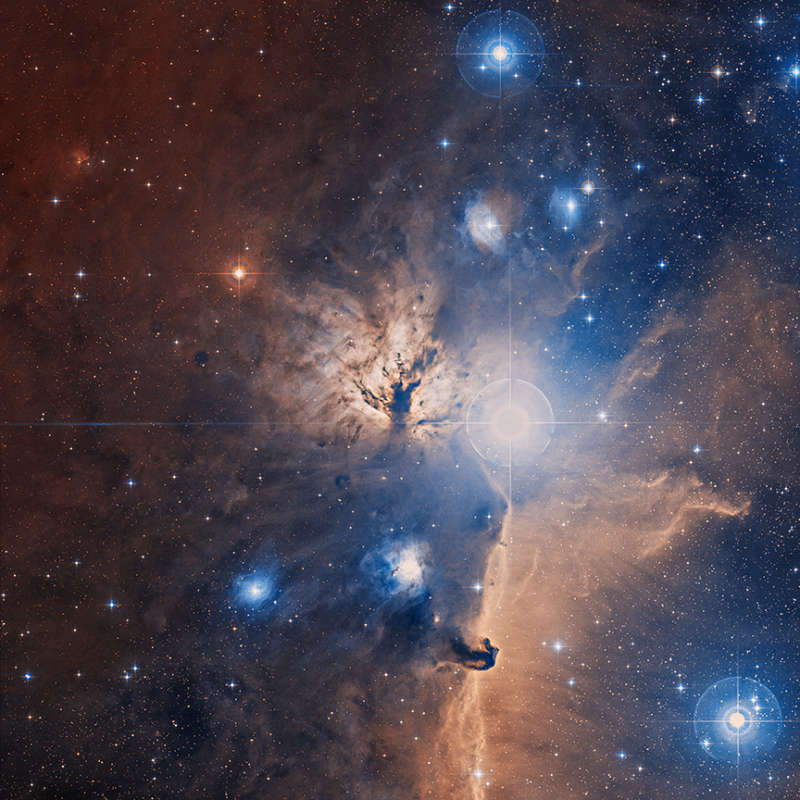Credit & Copyright: Optical:
DSS;
Infrared: NASA/JPL-Caltech;
X-ray: NASA/CXC/PSU/ K.Getman, E.Feigelson, M.Kuhn & the MYStIX team /a
Explanation:
The Flame Nebula
stands out in this optical image of the dusty, crowded
star forming regions
toward Orion's belt,
a mere 1,400 light-years away.
X-ray data from the Chandra Observatory and infrared images from
the Spitzer Space Telescope
can take you inside the
glowing gas and obscuring dust clouds though.
Swiping your cursor (or clicking the image) will reveal
many stars of the recently formed, embedded cluster
NGC 2024, ranging in age from 200,000 years to 1.5 million years young.
The X-ray/infrared
composite image overlay spans about 15 light-years
across the Flame's center.
The X-ray/infrared data also indicate that the youngest stars are
concentrated near the middle of the cluster.
That's the opposite of the simplest models of
star formation for the stellar nursery.
They predict
star formation to begin first in the denser center and
progressively move outward toward the edges leaving the older stars,
not the younger ones, in the center of the Flame Nebula.
X-ray: NASA/CXC/PSU/ K.Getman, E.Feigelson, M.Kuhn & the MYStIX team /a
1999 2000 2001 2002 2003 2004 2005 2006 2007 2008 2009 2010 2011 2012 2013 2014 2015 2016 2017 2018 2019 2020 2021 2022 2023 2024 2025 |
Январь Февраль Март Апрель Май Июнь Июль Август Сентябрь Октябрь Ноябрь Декабрь |
NASA Web Site Statements, Warnings, and Disclaimers
NASA Official: Jay Norris. Specific rights apply.
A service of: LHEA at NASA / GSFC
& Michigan Tech. U.
|
Публикации с ключевыми словами:
туманность - звездообразование - пыль
Публикации со словами: туманность - звездообразование - пыль | |
См. также:
Все публикации на ту же тему >> | |
